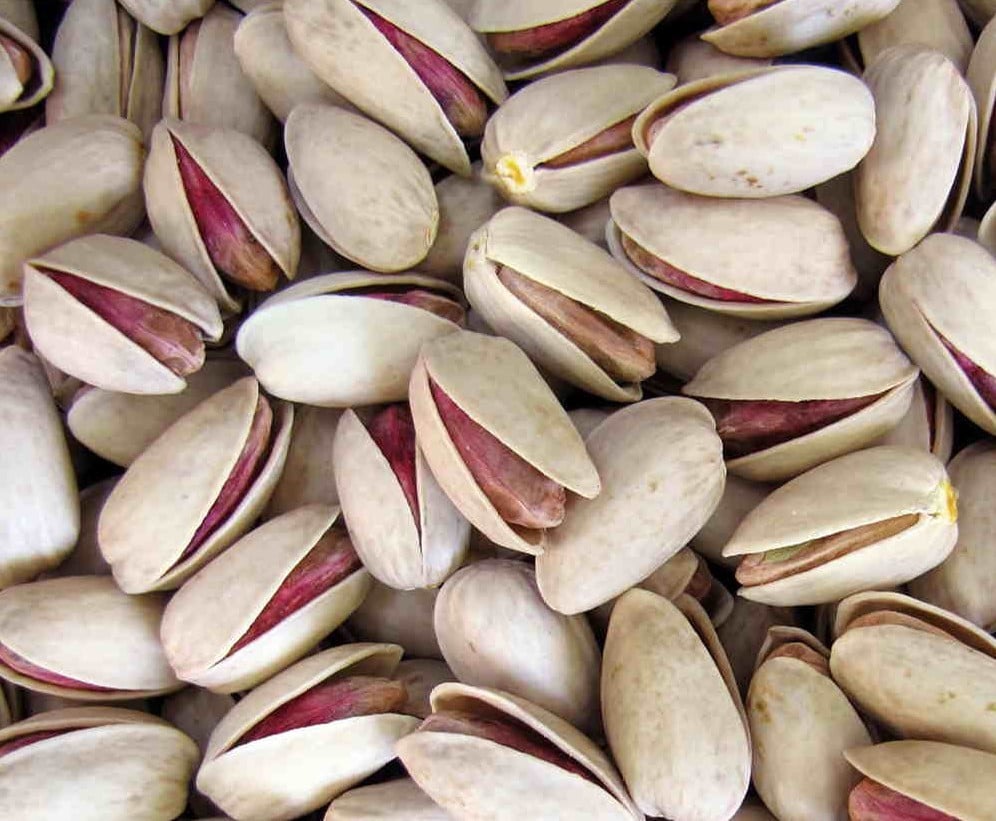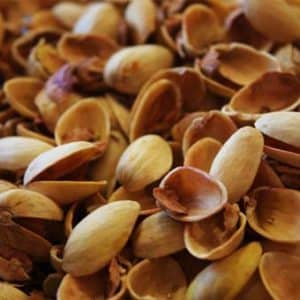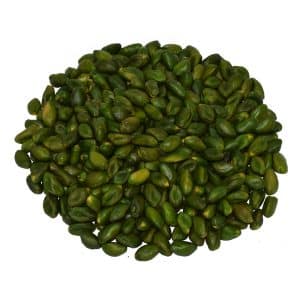Description
The pistachio tree
The inception of the pistachio tree most likely traces back to Central or East Asia. Currently, various species of this tree are cultivated in Iran. Pistachio trees have two bases, which implies that male and female blossoms develop on discrete trees.
Along these lines, both male and female roses are absent on a similar tree. The pistachio tree leaves are light green and substitute with 2 or 3 pointed handouts with a terminal pamphlet. The blossoms of the pistachio tree are grouped, and the male flowers don’t have petals.
Different names know pistachios in other Iran regions regarding quality, taste, kernel color, coarseness, smallness, darkness, lightness, and skin color.
In addition to these features, pistachio production also affects this dried fruit’s price in terms of quality. For instance, Damghan pistachio has a prime spot because of its great taste and a ton of fat, Qazvin pistachio has an uncommon area because of the green shade of its bit, and Rafsanjan pistachio has a special place due to its taste and red color of the kernel and also its light skin color.
Aside from the cultivars referenced in the past segment, probably the most renowned kinds of pistachios in Iran are Jabbari Pistachio, Rokany, Italian, Ghanouri, Nahedi, Ali Aghaei Badami pistachio, Badami pistachio Kaj, Seif al-Dini, Heratif Crow Fang, Paper Peel, Badami pistachio Ravar, Shatabadi, Ebrahimabadi, Mumtaz Tajabadi, Hazelnut Riz, Khanjari Ravari and so on.
It is worth considering that among the most important cultivars used for export include Koleghoochi, Hazelnut, Akbari, Ahmad Aghaei, and Badami pistachio cultivars.
Iranian pistachios have various varieties, and so far, more than 70 types of pistachios have been identified and cultivated in Iran.
The most famous Iranian pistachios include Akbari pistachio, Koleghoochi pistachio, Ahmad Aghaei pistachio, pistachio Hazelnut, Shahpasand Damghan pistachio, white pistachio, Nogh pistachio, Qazvini pistachio, and dagger pistachio are Damghan. There are different divisions for different types of pistachios in Iran.
Badami pistachio has a long and elongated shape, such as Akbari and Ahmad Aghaei pistachios or white cultivar Nogh pistachio. These pistachios are classified into the group of Badami pistachio. Badami pistachio is famous in the world for its long and beautiful appearance.
Luxury pistachios are also considered to have a round appearance, such as Koleghoochi and Hazelnut pistachios. Badami pistachio is commercial and export cultivars of Iranian pistachios and sold in various ounces as kernels or shells.
In addition to the reasons mentioned, the rooting and rooting of this cultivar should also be mentioned because in the Badami pistachio cultivar, from three to four roots, it has a straight and deep core.
However, in other cultivars, the roots are sprayed, and all the roots grow almost uniformly and at a shallow depth, up to a particular center, and the roots do not tend to be very deep, which causes more problems in the branches and leaves. But the Badami pistachio cultivar has a straight core that sinks deep into the soil.
It should be noted that the tree’s primary roots are different from the shallow roots, the main root is for the stability and survival of the tree, but most of the roots that gardeners see are for nutrition and growth.
For these reasons, all pistachio experts recommen
d using Badami pistachio seeds for planting pistachios. The characteristics of the trees of this cultivar are their high growth power and habit of extensive growth.
The length of the tree of this figure is 3.5, and the width of the crown of the tree is 3.5. This cultivar is considered one of the average flower cultivars, and its flowering lasts from 16 April to 27 April.
The beginning of brain growth is from July 10, and the full growth of the brain is August 20. Its brain is red. The softshell color tends to be green when it reaches a bright red.
The position of the bony shell is equal in both the dorsal and abdominal parts. The color of the white bony shell is slightly dull.
Benefits of Badami pistachio
Resistant to salinity:
Resistant to dehydration
Resistant to soil fungi
Resistant to pistachio psyllids (dry juice)
Having the proper root
Poor annualization
Medium loading













Reviews
There are no reviews yet.